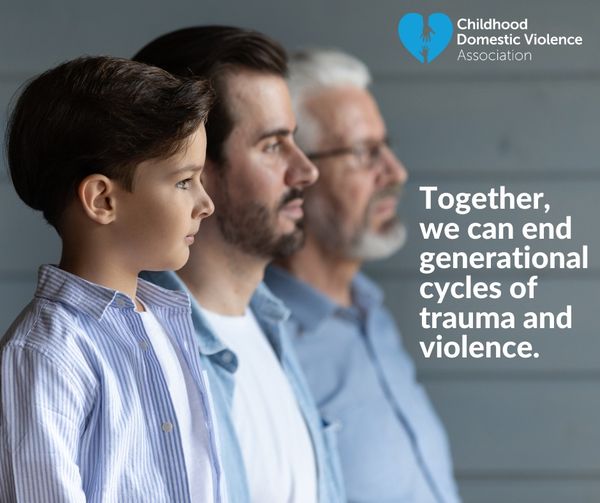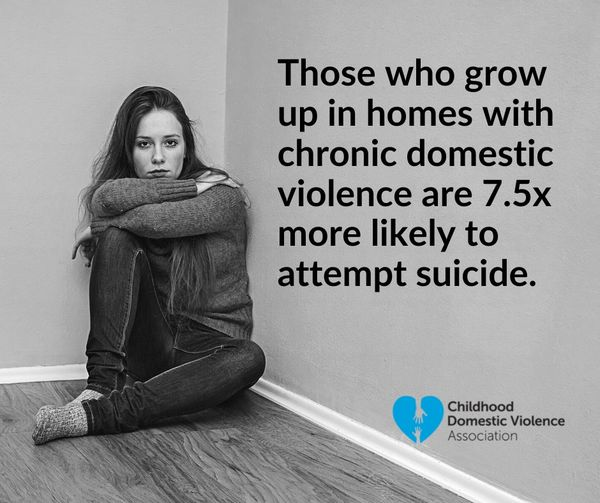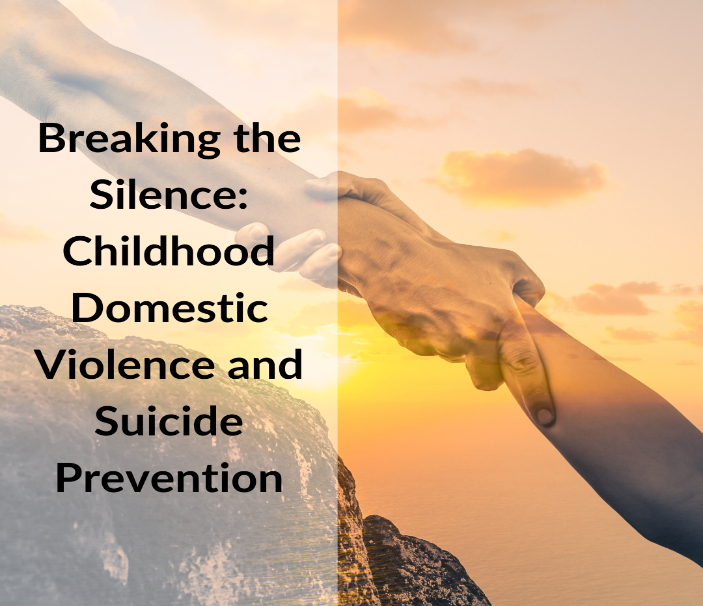Did you know that childhood domestic violence can serve as the single best predictor of domestic violence, and can lead to the risk of suicide attempts?
Childhood domestic violence (CDV) is the least known Adverse childhood experience (ACE) but has an impact of epidemic proportions to society. Aside from its importance as being a predictor of domestic violence, it often co-occurs with other ACEs including physical and emotional abuses, neglect, parental issues of substance abuse, mental illness or incarceration. The more ACEs a child faces growing up in a home with violence, the more they become at risk of suicide.
That risk does not stop when these children grow up. Adults that do not become aware of how these childhood traumas are impacting their lives also face a greater risk of continuing to suffer mentally and physically. Newer research indicates that growing up in a home with violence has the same negative impact on mental and physical well-being as being the target of violence in any form. If they do not have the resiliency through their own self-discovery or through help from others, they too will also continue to face a higher probability of suicide.
Suicide prevention and its connection to CDV must become a larger focus to aid this wide swath of the global population. To reduce the staggering rates of DV and thereby, suicide, the below focuses can help:
- Understand that DV often continues generationally in families because of CDV
- Distinguish the way DV can be polarizing while CDV is not
- Reduce the stigma of suicide
- Targeted prevention – for children living with CDV and adults who have already lived through CDV
Knowing the Connection to CDV can Help In Breaking the cycle of violence
Research shows children see 90% of the violence that occurs and its profound impact often lingers long after they’ve left their childhood homes. The statistics connecting child abuse, domestic violence and CDV show how critical it is to understand what CDV is and how an increased awareness of CDV can help to prevent these adversities simultaneously:
In households with domestic violence, there is a 30-60% chance child abuse is also taking place (a rate 15X higher than the average), indicating the key connection that child abuse is more likely to occur in homes where CDV is occurring.
| The connection and relevance to domestic violence is equally profound. Children of domestic violence are 2-3 times more likely to repeat the cycle of violence in adulthood, as growing up with domestic violence is the single best predictor of whether or not someone will become a victim or perpetrator of domestic violence in adulthood. |  |
Polarizing factors of domestic violence
It is fact that the vast majority of victims of DV historically are woman and children, while men are the perpetrators. Whether it is cultural, religious or economic factors in different parts of the world, violence against women is rampant. And the children who grow up in these homes bear witness to this violence, with negative consequences for their lives as well.
CDV however, does not discriminate – boys and girls grow up with CDV. And we know often these children become the next generation of victim and perpetrator. This is why it is critical to know and expose what CDV is. To truly reduce DV, to aid countless women that will be future victims, preventing these boys from becoming violent men is the most successful means.
What does all this have to do with suicide?
| Statistics show that when someone grows up in a home with domestic violence, suicide attempts increase. The ideation of suicide can also linger through adulthood. |  |
Children who grow up with violence have an increased risk for many negative outcomes through all stages of their life. These children are also 7x more likely to attempt suicide. One of the largest studies recently conducted, covering 200,000+ adults in several countries, found that those who experienced sexual, physical or emotional abuse were 2-3x more likely to attempt suicide.
According to The World Health Organization, domestic violence of women has shown that 36% of survivors contemplated suicide while 23% did make the attempt. It’s a grave statistic that directly impacts the children in these homes.
Being that research now shows that living in a home with violence has the same impact as being the one abused, the statistics are the same for those growing up with CDV or DV.
The stigma of suicide
Suicide is currently the 15th most common cause of death globally. Over 800,000 people die this way, with a higher number of suicide attempts.
Yet much of society perceives suicide differently than other types of death. Avoidance of the survivors of a family member can occur, or judgement that somehow the surviving is to blame, that that person should have been aided. Self-shame or public shame can occur.
This stigmatization becomes even more complex when domestic violence is involved. A perpetrator could take advantage of family members by threatening suicide, thus entrapping the ones that are abused. A mother may be afraid to reveal her own suicidal thoughts to anyone, in fear of her children being taken by the court system. A child living in this home may think about suicide but feel weak or ashamed and does not seek help or talk to anyone. This level of toxic stress could cause further damage to the well-being of this child, or increase thoughts of suicide.
Often though, domestic violence has nothing to do with mental illness. And society tends to associate suicide with mental illness. In the field of domestic violence, it is a far greater challenge to determine one from the other.
Preventing suicide by those impacted by domestic violence
Although the connection of suicide to domestic violence should be apparent, many in the field work in isolation. Fortunately, that is starting to change. SAMHSA is striving to bring together professionals that work in domestic violence with those that aid in suicide prevention through the sharing of research and resources to provide to those in both fields.
The focus is more on finding out about violence in their lives, what are the circumstances in their lives that would cause thoughts of suicide. As empathic as the prevention is, more is being asked. The prevention though complex targets discussion and getting those they come in contact with to open up. The new prevention also cuts out the stigma around domestic violence, cutting across societal attitudes towards gender, as suicide impacts all.
Know the signs for youth at risk of suicide. This is one of the best ways to prevent it.
Provided by Children’s Hospital of Philadelphia:
- Talking about suicide, dying, or self-harm
- Looking for access to guns, pills, or other lethal means
- Unusual preoccupation with death, dying, or violence
- Talking about feeling hopeless or having no reason to live
- Talking about feeling trapped or in unbearable pain
- Talking about being a burden to others
- Expressing feelings of self-loathing, worthlessness, guilt, and shame
- Increasing the use of alcohol or drugs and other self-destructive behaviors
- Sleeping too little or too much
- Withdrawing from friends and family
- Showing rage or talking about seeking revenge
- Loss of touch with reality, seeing things or hearing voices
- Displaying extreme mood swings.
Building Communities
Building a community to support suicide prevention could be a daunting task, and one that you may not want to take on alone. The Suicide Prevention Resource Center, affiliated by SAMHSA, does provide some starting points of how to build or create a support system locally.
You can also find more prevention guidelines, organizations at state level, news stories and more to help assist with your community strategy.
No community is too small if it helps not only prevent a suicide but get that child or adult on a path towards building resiliency in their lives. A support system can be one person alone that changes a life.
————–
Preventing childhood domestic violence is vital because it serves as the single best predictor of future challenges, including the risk of suicide. Early intervention empowers survivors by fostering resilience, breaking generational cycles, and creating supportive communities.
By addressing this issue at its source, we not only reduce the stigma around suicide and domestic violence but can hope to see changes in future policy and improved support systems. Change the path of survivors of domestic violence and at the same time prevent suicide.

